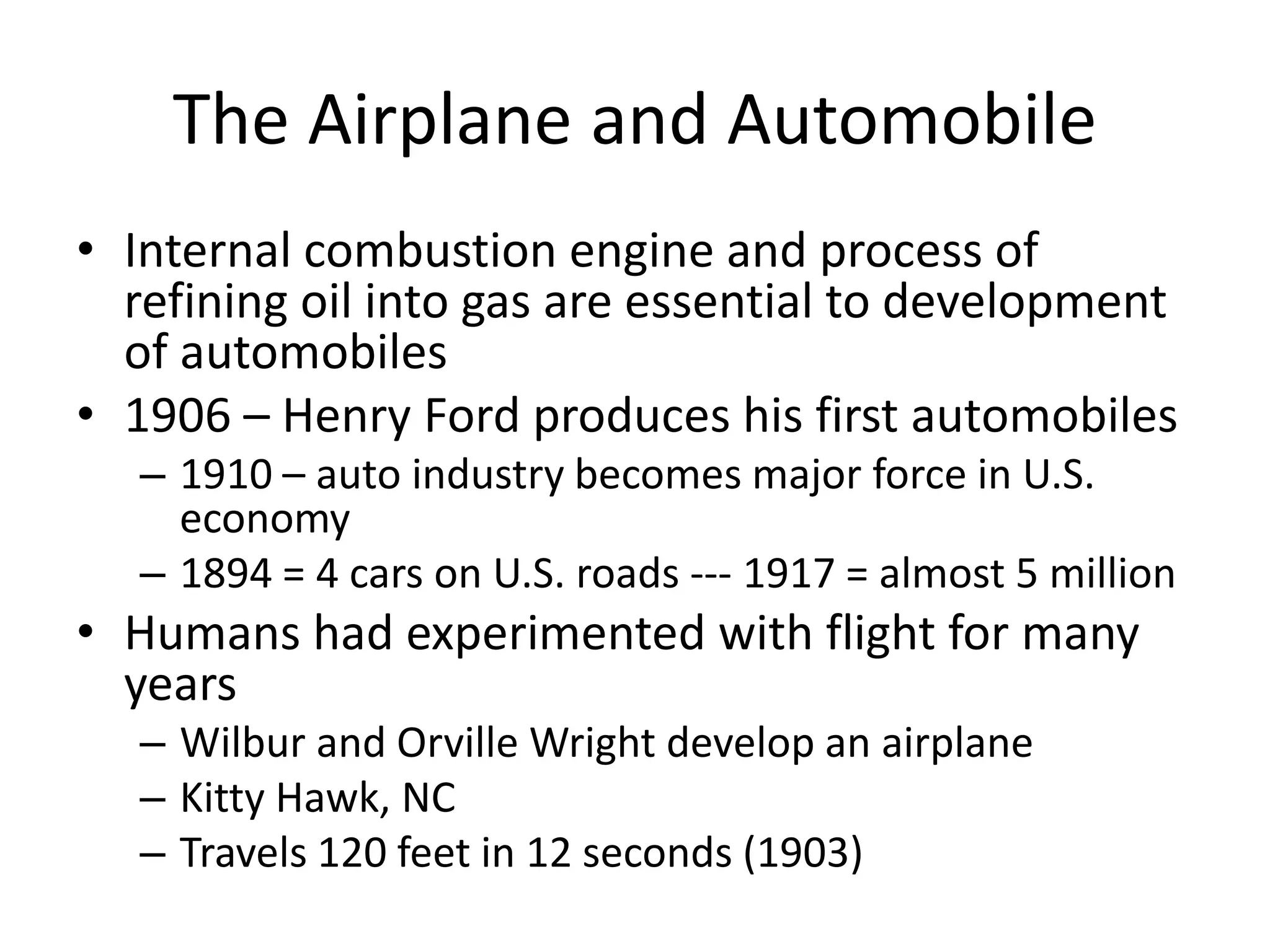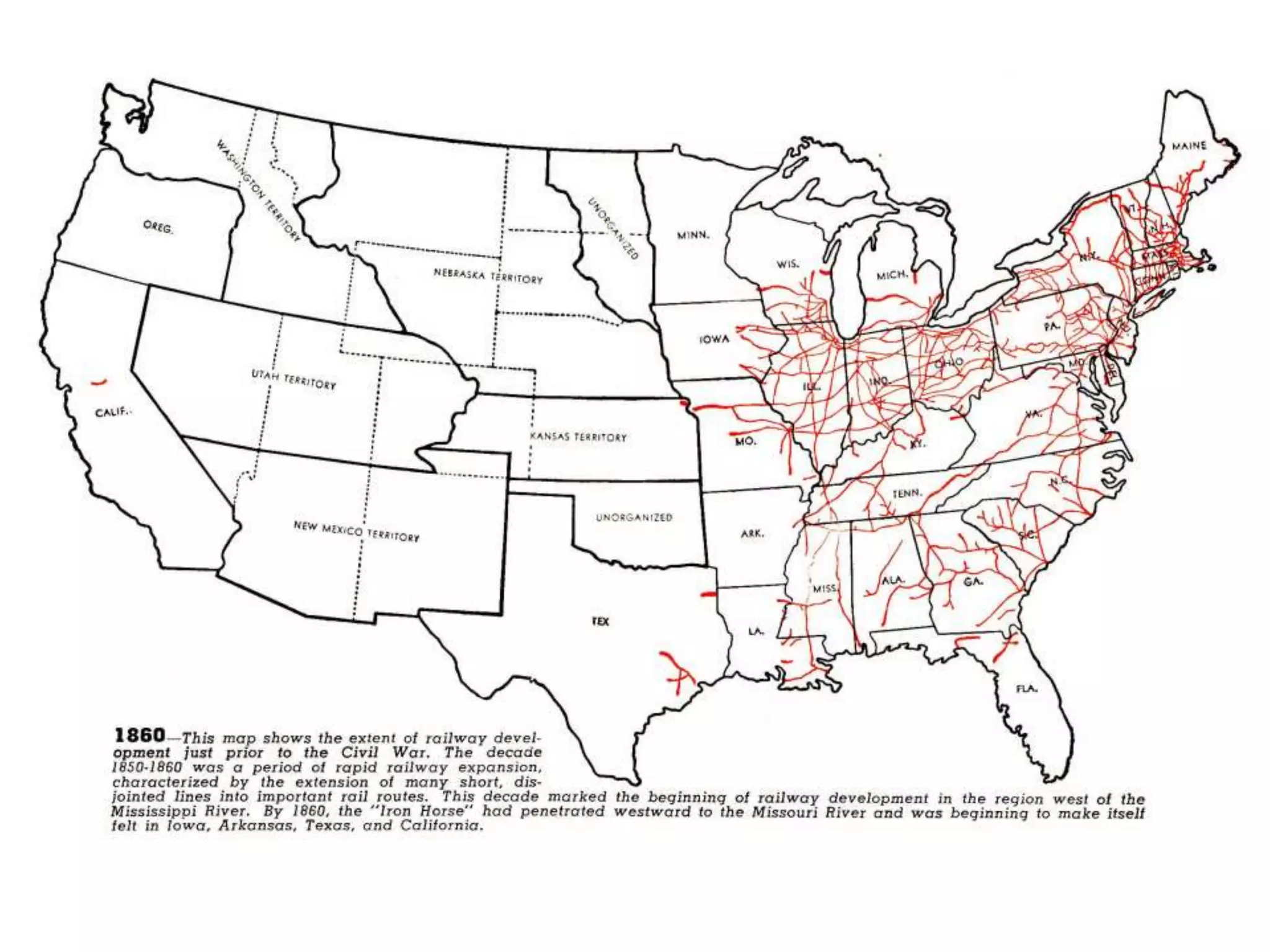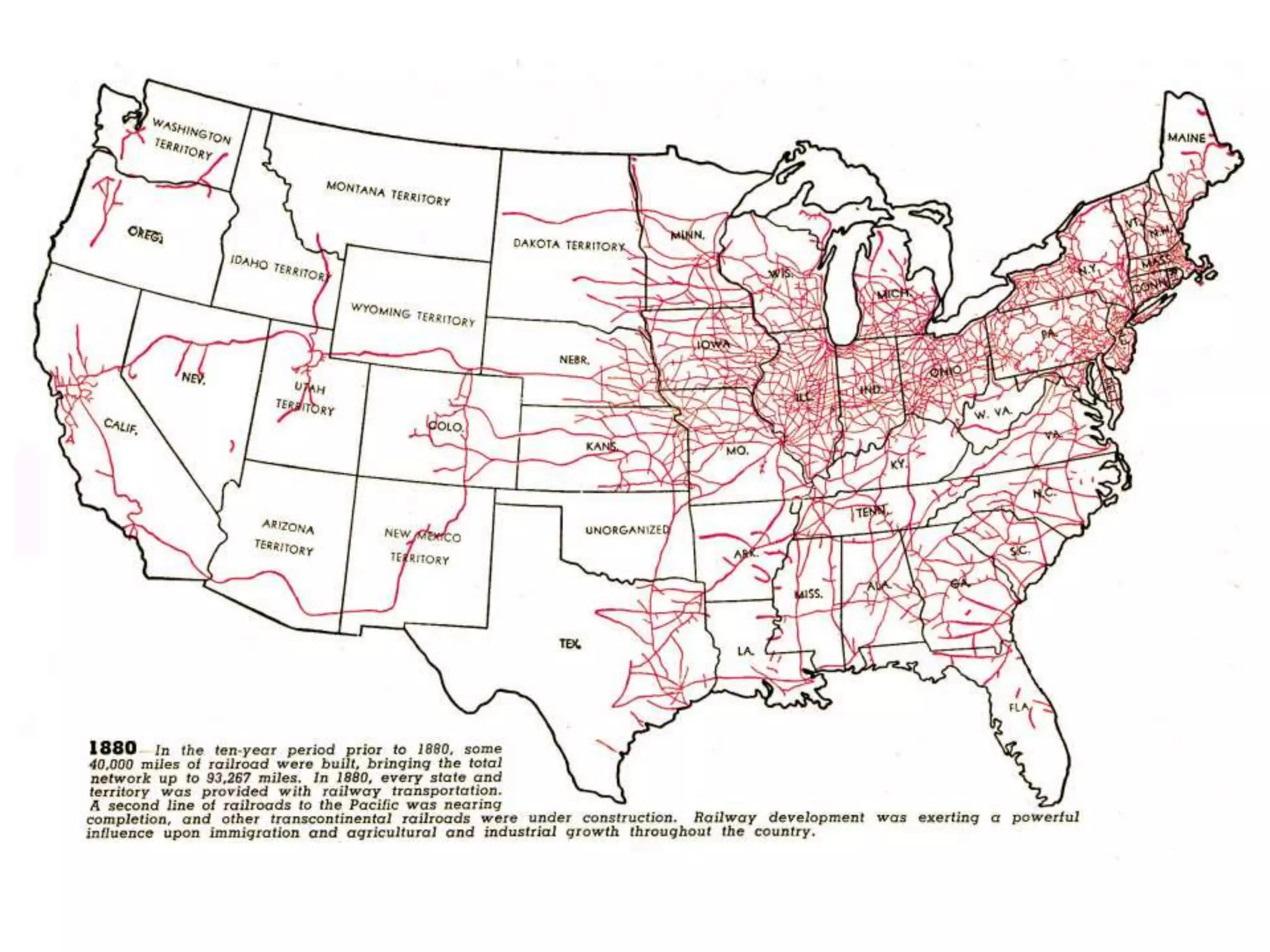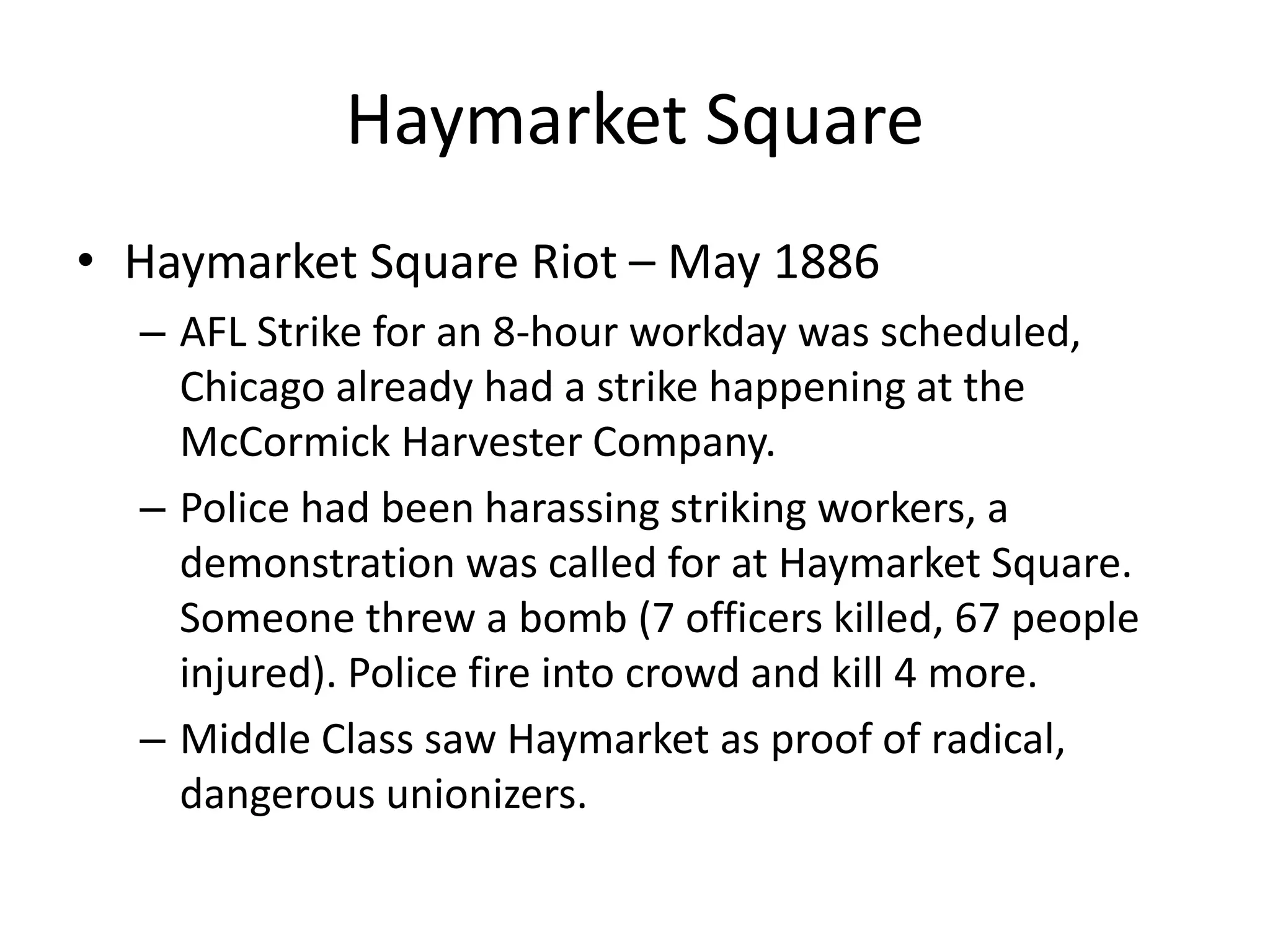The document summarizes key factors that drove America's rapid industrialization in the late 19th/early 20th century, including abundant natural resources, growing labor force, technological innovations, entrepreneurship, and government support of businesses. New technologies like steel production, the internal combustion engine, and airplanes transformed the economy. Massive corporations like U.S. Steel and Standard Oil dominated entire industries. Industrialization led to growing inequality between wealthy "Captains of Industry" like Rockefeller and Carnegie and the large immigrant workforce, including many women and children, who faced difficult and dangerous working conditions for low wages. As unions like the Knights of Labor and AFL organized to fight for workers' rights, middle-class fears of radicalism grew due































